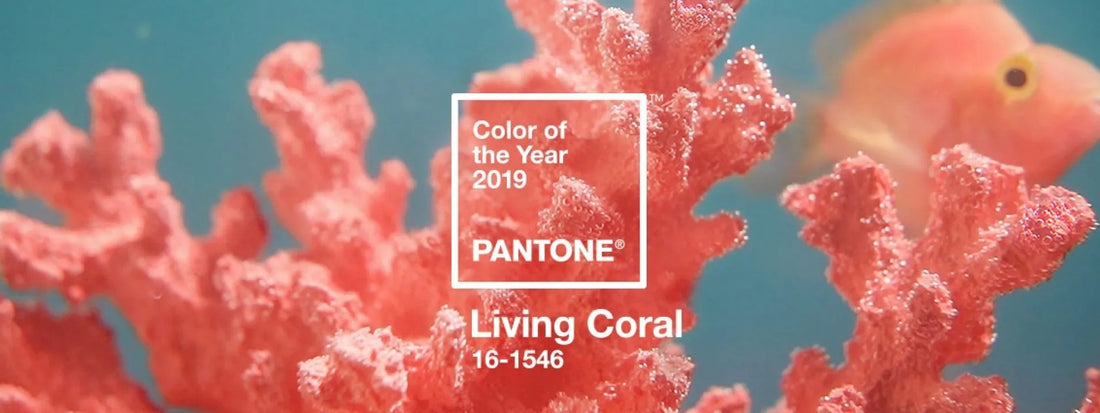
Coral is the collective name that is used to describe a very large number of species of cnidarians of the Anthozoa class, in total more than 7,300 species of tiny animals. Among these, we may encounter, for example, the shallow-water coral species from the Australia’s Great Barrier Reef and elsewhere that have been suffering from bleaching and death as a result of climate change and ocean acidification. This dramatic situation for the equilibrium of the planet’s marine ecosystems have negatively impacted on the reputation of coral as a luxury product. It happens that the corals used in the jewellery industry do not live in the same ecosystem as those endangered reef corals. This is why those that are used jewellery and decorative arts have been designated as “precious corals” by CIBJO, the World Jewellery Confederation, separating them from the “common corals”, and even more dramatically from the endangered reef corals. It must be said that in the biology lexicon, the term "precious corals" has a wider scope and include all that may have a decorative purpose, but in the jewellery trade lexicon, the term is defined in a different way according to the coral types that are specifically used in high jewellery.

Pleurocorallium elatius (magai coral) in a necklace by Assael
What are Precious Corals?
The jewellery industy standards of CIBJO define these as the corals most used in high-end jewellery and decoration, being limited to species belonging to the Corallidae family, particularly from the genus Corallium, Pleurocorallium and Hemicorallium. It is, in fact, in some of these groups that we can find the red and pink varieties with porcelain-like lustre after polishing that relate to the Pantone colour of 2019. A few varieties of red and pink coral are listed for the monitoring of the trade in Appendix III of CITES at the request of China in 2008 (Corallium elatius, C. japonicum, C. konojoi and C. secundum[sic]), meaning that the species, even than they are not endangered, every international transaction requires proper documentation for controlling and statistics. However, no precious coral species is listed in the more restrictive CITES Appendix II and the prohibiting Appendix I. At the CITES Conference of Parties held in Geneva in 2019 no further action was proposed for precious corals. The recent fishing regulations in the Mediterranean, Taiwan and Japan seem th have played an important role in resource management of precious corals and more initiatives are being implemented to further the issue.

Master Pasquale Nastrio sorting Mediterranean coral at Liverino 1894, Torre del Greco.
Let’s now present what are the most relevant precious coral species currently recognized by the jewellery trade: Corallium japonicum (Aka, Moro or Oxblood coral), the dark red to very dark red corals with a lengthwise white interior which live at depths of 80 to 300 in Japan; Pleurocorallium elatius comprising of two varieties: the so called Momo, Cerasuolo or Satsuma coral, a bright red, salmon, orange and flesh colour with a lengthwise white interior and its rare albino variety, known in the trade as Angel Skin, Boké or Magai coral, a delicate flesh pink, with different colour intensities, which live at depths of 150 to 300 meters mainly off the coasts of Japan and Taiwan; Pleurocorallium konojoi (Pure White or Shiro coral), the milky white and sometimes with red or pink specks, that live at depths of 80 to 300 meters in the South China Sea and off the coast of Hainan; Pleurocorallium secundum (Midway, Rosato or White/Pink), the veined white or pink, and sometimes with red specks, or uniform clear pink, that lives at depths of 400 to 600 meters off the coasts of Hawaii and Midway Island; Hemicorallium laauense (Deep Sea or Shinkai coral), the bright white, clear pink or white pomegranate with red veins or spots which live at depths of 1,000 to 2,000 meters off the coast of Midway Island, north-west of Emperor Seamount; Hemicorallium regale (Garnet coral), the pomegranate colour with different shades of uniform pink that live at depths of 350 to 600 metres off the coast of Hawaii; Hemicorallium sulcatum (Misu, Missu or Miss coral), the pink to violet uniform colour which live at depths of 100 to 300 metres in the Philippines northern coastal waters; last but not least, Corallium rubrum (Sardinian or Mediterranean coral), the historically and culturally famous uniform red with medium to strong saturation that live at depths up to 1,000 metres (harvested bellow 50 meters) in the Mediterranean and in the Atlantic Ocean off the coast of North Africa, including in the waters of the Canary Islands and Cape Verde. The historically relevant Sciacca coral varieties from the sedimentary deposit officially found off the coast of Sciacca in the Sicily Channel in 1875 is also from Corallium rubrum.

"Angel's Skin" coral bracelet designed by the late José Manuel Rosas © Rosior



